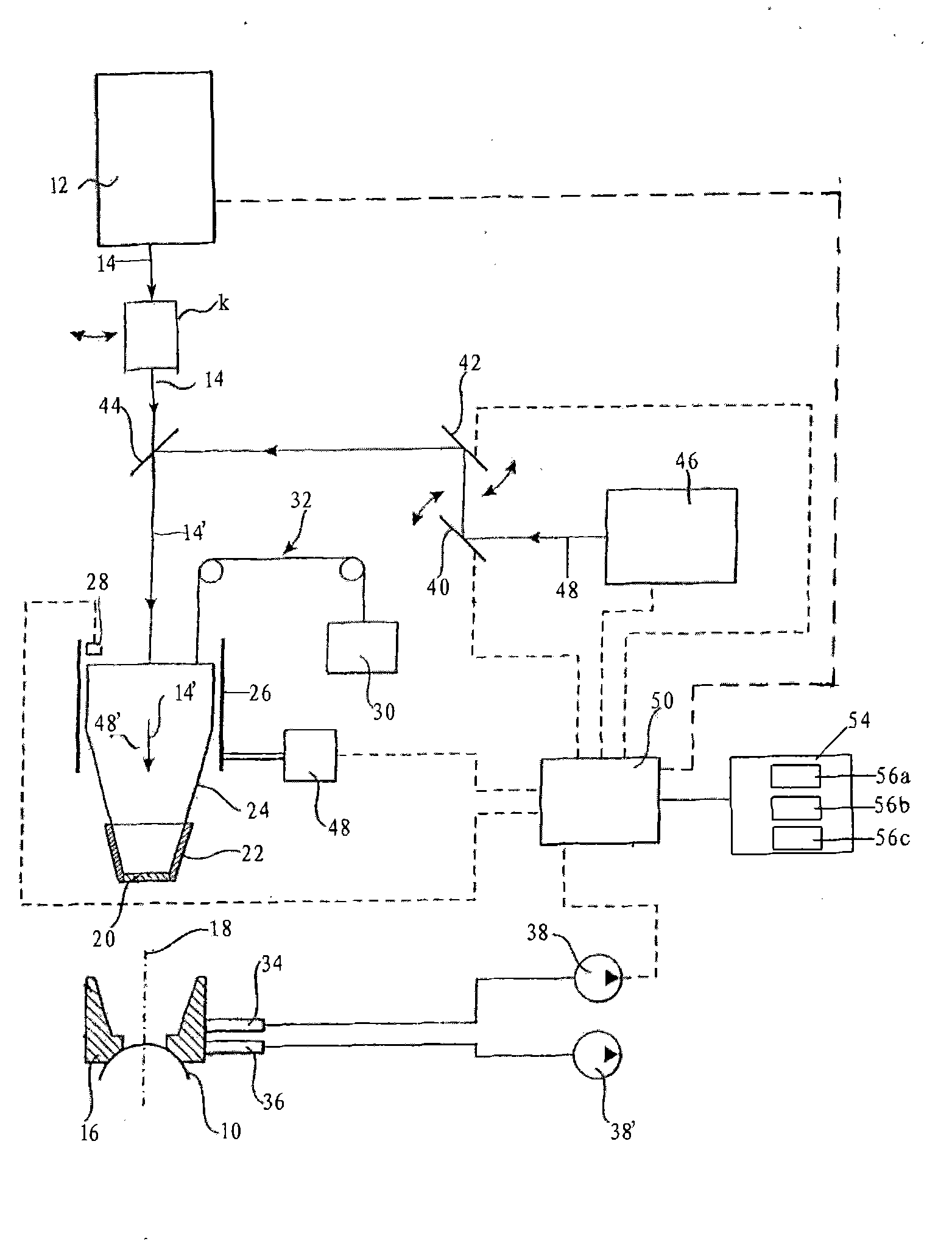Device for LASIK
A technology of excimer laser and cornea, applied in laser surgery, ophthalmic surgery, ophthalmic treatment, etc., can solve unwanted problems
- Summary
- Abstract
- Description
- Claims
- Application Information
AI Technical Summary
Problems solved by technology
Method used
Image
Examples
Embodiment Construction
[0031] figure 1 An arrangement is shown for femtosecond LASIK, where two different sets of laser irradiation sources are typically used, a first laser irradiation source aimed at generating the femtosecond pulses used to perform valve ablation with a light burst and another laser irradiation source intended to generate A second source of laser irradiation pulses of another type of laser irradiation pulse having a lower energy density for performing corneal tissue ablation. In the art, two different laser irradiation systems are usually configured for this purpose, with separate optics for eye-related beam shaping and beam guidance, which alternatively (with respect to each other) space independently) aimed at the eye to be treated. But when figure 1 In , for the sake of simplification, the two systems are represented in actual combination.
[0032] The first laser irradiation source 12 is used to generate femtosecond pulses 14 , known per se in the art, the energy density o...
PUM
 Login to View More
Login to View More Abstract
Description
Claims
Application Information
 Login to View More
Login to View More - R&D
- Intellectual Property
- Life Sciences
- Materials
- Tech Scout
- Unparalleled Data Quality
- Higher Quality Content
- 60% Fewer Hallucinations
Browse by: Latest US Patents, China's latest patents, Technical Efficacy Thesaurus, Application Domain, Technology Topic, Popular Technical Reports.
© 2025 PatSnap. All rights reserved.Legal|Privacy policy|Modern Slavery Act Transparency Statement|Sitemap|About US| Contact US: help@patsnap.com



